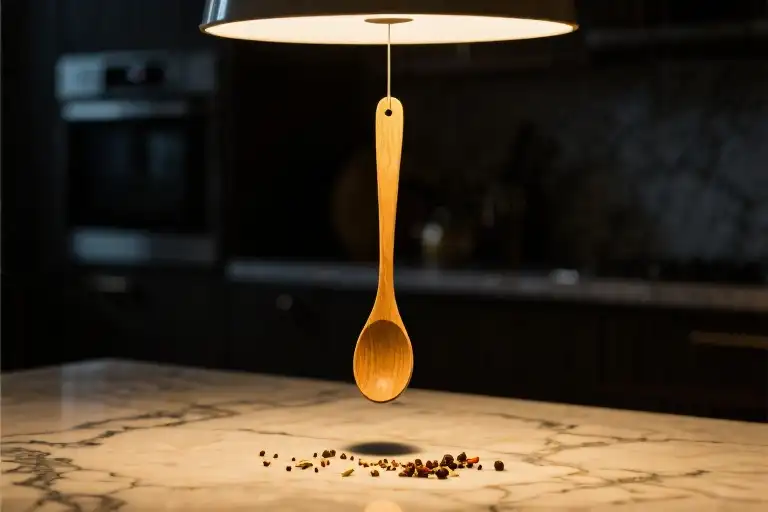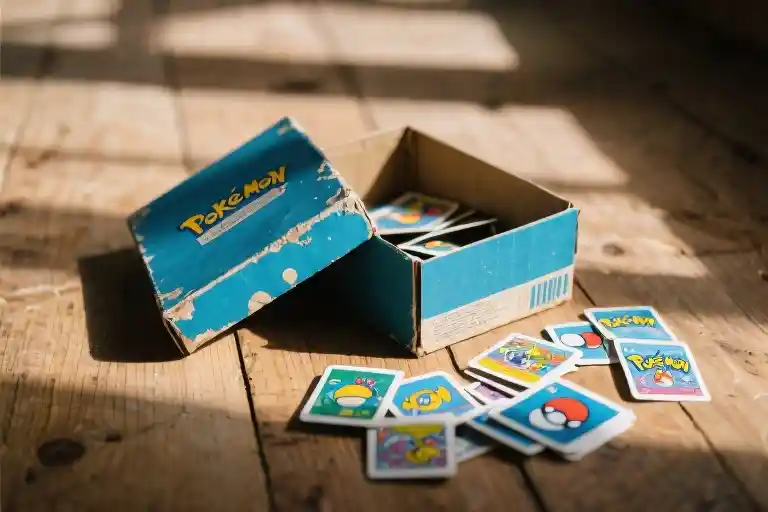The wooden spoon hovered at chin level, its curved edge catching the kitchen light like a dull blade. He was twenty-nine. I was twenty. The nine-year gap felt widest when he’d conduct these taste tests, watching my face with the intensity of a professor grading a thesis defense. ‘Close your eyes,’ he’d command, and I’d obey, not out of affection but something closer to anthropological curiosity—how did this man turn cumin and cardamom into instruments of control?
His cooking had a cult leader’s precision. Every slice of garlic was measured, every pinch of saffron threads counted like rosary beads. The dishes arrived with ceremonial gravitas: ‘This will be the best thing you’ve ever tasted.’ The promise hung heavier than the steam rising from the plov, its golden rice studded with carrots cut into perfect julienne. I’d chew slowly, aware of his gaze cataloging my microexpressions—the slight flare of nostrils at smoked paprika, the involuntary tongue swipe after biting into a clove-braised onion.
What unsettled me most wasn’t the age difference but how food became our relational syntax. He spoke in recipes and tasting notes; I responded with emptied plates. The wooden spoon wasn’t just a utensil but a scepter, the kitchen island his throne. When he’d smear pomegranate molasses on my lower lip ‘for tasting,’ I recognized the gesture for what it was—a king anointing his subject.
Now, years later, I still catch myself dissecting flavors with his vocabulary. Was that star anise or my nostalgia distorting the memory? The cumin seed stuck in my molar during our last fight outlasted the relationship by three months. Sometimes I wonder if what I craved wasn’t his approval but the singular focus of being someone’s culinary experiment—the temporary illusion of mattering more than the next spice blend waiting in his meticulously organized rack.
We never talk about how feeding someone can be its own language of domination. The way ‘Here, try this’ really means ‘Let me redefine your preferences.’ How ‘You’ve never had real curry’ implies your entire life has been gastronomically inadequate. That wooden spoon suspended between us held more than just stew—it carried the unspoken hierarchy of teacher and student, creator and consumer, the hand that feeds and the mouth that receives.
My therapist calls it transactional intimacy. I call it learning the hard way that some men use truffle oil like emotional blackmail. What lingers isn’t the memory of his face but the sensory imprints: the way turmeric stained his cuticles yellow for days, how his apron strings always dangled untied in reckless contradiction to his exacting recipes. The kitchen smelled like toasted coriander and something darker, something that clung to my clothes long after I left—the scent of being carefully, deliberately seasoned.
The Cult Kitchen
He stood at the counter with the precision of a surgeon, except his scalpel was a chef’s knife and his operating table was my willingness to be impressed. At twenty-nine, he moved through the kitchen with the confidence of someone who believed cooking was less about nourishment and more about domination. I was twenty, perched on a barstool that was too high, my feet dangling like a child’s. The age gap stretched between us like the long blade of that knife.
‘Watch closely,’ he’d say, holding up a chili pepper between thumb and forefinger. ‘This will test your limits.’ The way he eyed my reaction as I chewed wasn’t about concern for my palate—it was a calibration. He was mapping my tolerance levels the way cult leaders assess new recruits, finding the exact point where discomfort flips into devotion.
His cooking performances always followed the same ritual. The wooden spoon became a conductor’s baton, the sizzle of onions his orchestra. ‘This dish will change how you think about food,’ he’d declare, as if presenting scripture rather than stir-fry. The kitchen tools took on sinister roles—the meat thermometer probing like an interrogator, the oven light glaring down like a police lamp during questioning.
Most telling was the fork. Not how he used it to eat, but how its tines would trace the outline of my lips before feeding me, the cold metal leaving invisible marks. I laughed it off then, called it theatrical. Now I recognize it for what it was: cutlery as control mechanism, the most banal items weaponized through intention.
What unsettles me most in retrospect isn’t the obvious power imbalance, but how willingly I participated. How I mistook his performative expertise for care, his gastronomic gaslighting—’You’ve never tasted real umami until now’—for culinary education. The kitchen became our shared delusion, where I pretended to be awed and he pretended he wasn’t keeping score.
The cumin seeds still linger in my memory’s crevices, more persistent than any promise he ever made. They outlasted the relationship by years, these tiny flavor bombs detonating at random—in a friend’s curry, in a supermarket aisle, in the middle of unrelated conversations. The body remembers what the mind tries to forget: not the taste, but the texture of being studied like a specimen under his culinary microscope.
The Archaeology of Spices
The basil leaves in my freezer have turned into fragile green fossils. I keep them in a mason jar labeled “Summer 2018” like some amateur anthropologist preserving evidence of a lost civilization. That was the year he taught me to make pesto, his hands guiding mine on the mortar and pestle with the solemnity of a ritual. “The friction releases the soul of the herb,” he’d say, and I’d nod while counting the veins on his forearm.
Neuroscientists call it the Proust effect – how certain smells can yank memories from decades past with violent clarity. What they don’t mention is how these sensory time machines lack an off switch. The cumin in my cabinet still carries his fingerprint, though he stopped touching me three winters ago. I’ve developed my own classification system for these edible ghosts:
Five-star hauntings: Saffron threads that stain your fingers yellow for days, like the residue of promises that won’t scrub off. The Russian plov he’d simmer for hours, watching the clock as intently as he watched my reactions.
Three-star echoes: Cardamom pods cracked under mortar pressure, their citrusy musk still clinging to my favorite sweater. The scent resurrects Sunday mornings when he’d critique my coffee grinding technique.
One-star specters: That half-empty bottle of vanilla extract in the back of my pantry, its alcohol bite a cheap imitation of the Madagascar beans he’d split lengthwise with his chef’s knife. Even now, supermarket cupcakes taste like surrender.
At the gastropub last week, I ordered the saffron risotto just to prove I could. The waiter asked if I wanted freshly grated parmesan, and for one dizzying moment I heard his voice: “Always taste before you season.” My fingers remembered the weight of that wooden spoon he’d press into my palm like some culinary sacrament.
The risotto arrived gleaming under pendant lights, each grain of rice separate yet bound in creamy conspiracy. I took my time dissecting the flavors – the deliberate pinch of sea salt, the shallots caramelized to just this side of bitter. No one was grading me now. When the fork clinked against the empty plate, the sound was lighter than I expected.
The Thirty-Dollar Therapy
The menu felt heavier than it should have—thick cardstock with embossed lettering that caught the light when I tilted it. At the gastropub’s dimly lit bar, I ran my finger down the right side where the prices lived, pausing at a thirty-dollar scallop dish. It wasn’t the cost that gave me pause; it was the realization that I could order it without anyone leaning over my shoulder to murmur, You won’t like the texture.
This was the third solo date I’d scheduled for myself that month, a ritual that had begun as an experiment and solidified into something like self-prescription. There was a clinical precision to it: Identify the memory to be excised (him sliding a forkful of saffron rice into my mouth, eyes fixed on my reaction). Select the antidote (seared diver scallops with brown butter emulsion, a flavor profile he’d dismiss as trying too hard). Swipe the card.
The bartender slid the plate toward me with a nod. No commentary, no grading. Just food and the quiet hum of other people’s conversations. I took a photo—not for social media, but to mark the moment my tongue reclaimed its sovereignty. The first bite was colder than expected, the scallop’s sweetness undercut by a briny sharpness that made my eyes water. Or maybe that was the ghost of his voice saying, See? I told you you’d prefer my version.
High-end dining, I’d learned, functioned as both scalpel and bandage. The meticulous plating mirrored the surgical focus required to dissect old attachments, while the act of paying premium prices created a psychological barrier—these flavors couldn’t be contaminated by nostalgia, because they existed in a financial stratum he’d never sanctioned. His cooking had been about control; my solo meals were about controlled demolition.
By dessert (a salted caramel pot de crème that cost more than our shared Uber rides), I noticed the paradox: The more I spent, the less the food needed to mean. No one was watching to see if I appreciated the vanilla bean specks in the custard. No grade was assigned to my sigh when the caramel hit the back of my throat. The silence between bites wasn’t a test, just space—the kind that eventually fills with your own thoughts instead of someone else’s expectations.
The receipt came with a smudge near the tip line, grease from the kitchen or perhaps my own thumbprint. I left it on the counter as I walked out, the paper already forgetting the weight of that thirty-dollar transaction. Outside, the air smelled of rain and fried shallots from the food truck across the street. For the first time in years, I couldn’t recall the exact shade of saffron he’d insisted was essential for real paella.
The Stain on the Receipt
The credit card slip from the gastropub sits on my nightstand, its edges curling like old love letters. A grease stain blooms across the line where I’d calculated the tip—twenty percent, the exact percentage he used to deduct from my cooking grades when my palate failed his standards. The oil has seeped through the thermal paper, creating a translucent map of some unknown territory where thirty dollars bought me temporary sovereignty over my own taste buds.
Eating alone at that marble counter, I realized the quiet luxury of not being watched. No professor’s gaze analyzing my chewing rhythm, no cult leader waiting for his revelation to hit my dopamine receptors. Just the server’s polite detachment as he refilled my sparkling water, his indifference more nourishing than any saffron-infused declaration ever was.
Freedom tastes like accidentally over-salting your own food and eating it anyway. Like ordering dessert first because no one’s keeping score. The check presenter becomes a mirror—when the leather folder closes, it reflects only your own choices back at you, uncompromised and uncommented upon.
Yet here’s the stubborn truth: my tongue still catalogues flavors according to his taxonomy. That gastropub’s mole sauce had depth and balance (B+), the heirloom carrots needed more acid (C-), the chocolate torte achieved textbook bitterness (A). The ghost of his wooden spoon taps against my molars even as I swallow the last bite of independence.
Science claims taste buds regenerate every seven years. Cells slough off, new ones emerge, yet somehow his plov still lingers like a stubborn spice stain no detergent can lift. Maybe memory doesn’t reside in the tongue at all, but in the space between the fork and the mouth, in the anticipatory pause before the first bite where someone once said “This is for you” and made it sound like a life sentence.
The receipt’s grease stain has now transferred to my thumbprint. I press it against the blank page of a new notebook, leaving behind the faintest mark—not quite a scar, not quite a souvenir, but proof that some transactions leave residue no matter which card you use to pay.





